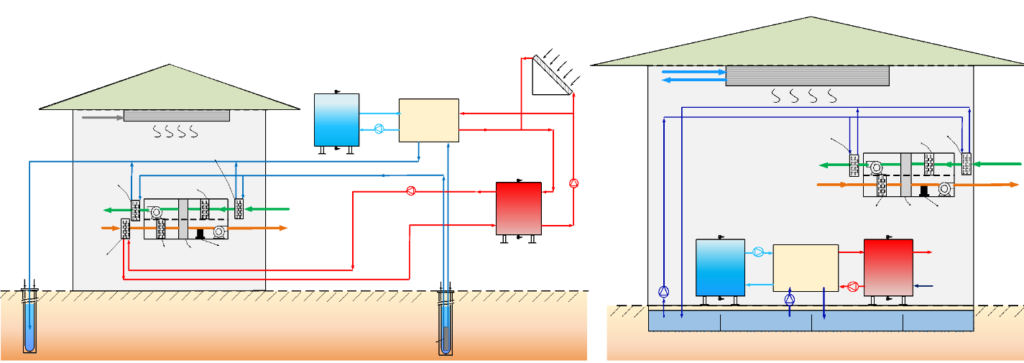Nearly Zero Energy (NZE) HVAC Design with Desiccant Wheel System

2016-2018
Context
The push for sustainability and energy efficiency has led to innovative approaches in heating, ventilation, and air conditioning (HVAC) systems, especially in commercial and institutional buildings. Traditional HVAC systems are energy-intensive and rely heavily on non-renewable energy sources, resulting in high operational costs and significant environmental impacts. In response to these challenges, there is a growing focus on developing nearly zero-energy HVAC systems. These systems aim to integrate renewable energy technologies and advanced components to minimize energy consumption and reduce environmental footprints while meeting the thermal comfort requirements of building occupants.
Content
We developed a nearly zero-energy HVAC system by integrating renewable technologies such as geothermal heat pumps, desiccant wheel systems, solar thermal collectors, and groundwater well systems. This system efficiently produces chilled and hot water, dehumidifies and cools air, and balances thermal energy supply and demand through thermal storage. By leveraging these advanced components, the system significantly reduces energy consumption and environmental impact while maintaining occupant comfort in large buildings.
Conclusion
The innovative nearly zero-energy HVAC system represents a significant advancement in sustainable building infrastructure. By efficiently producing and managing both chilled and hot water through renewable technologies, the system meets the heating and cooling demands of large buildings while substantially reducing reliance on non-renewable energy sources. This design achieves a lower carbon footprint, enhanced energy efficiency, and sustainable thermal comfort for occupants. It sets a new benchmark for future HVAC system designs, contributing to global efforts in sustainability and energy conservation.